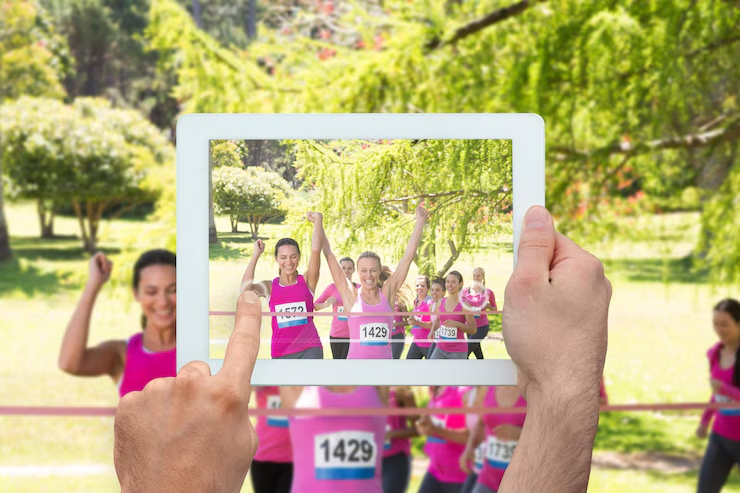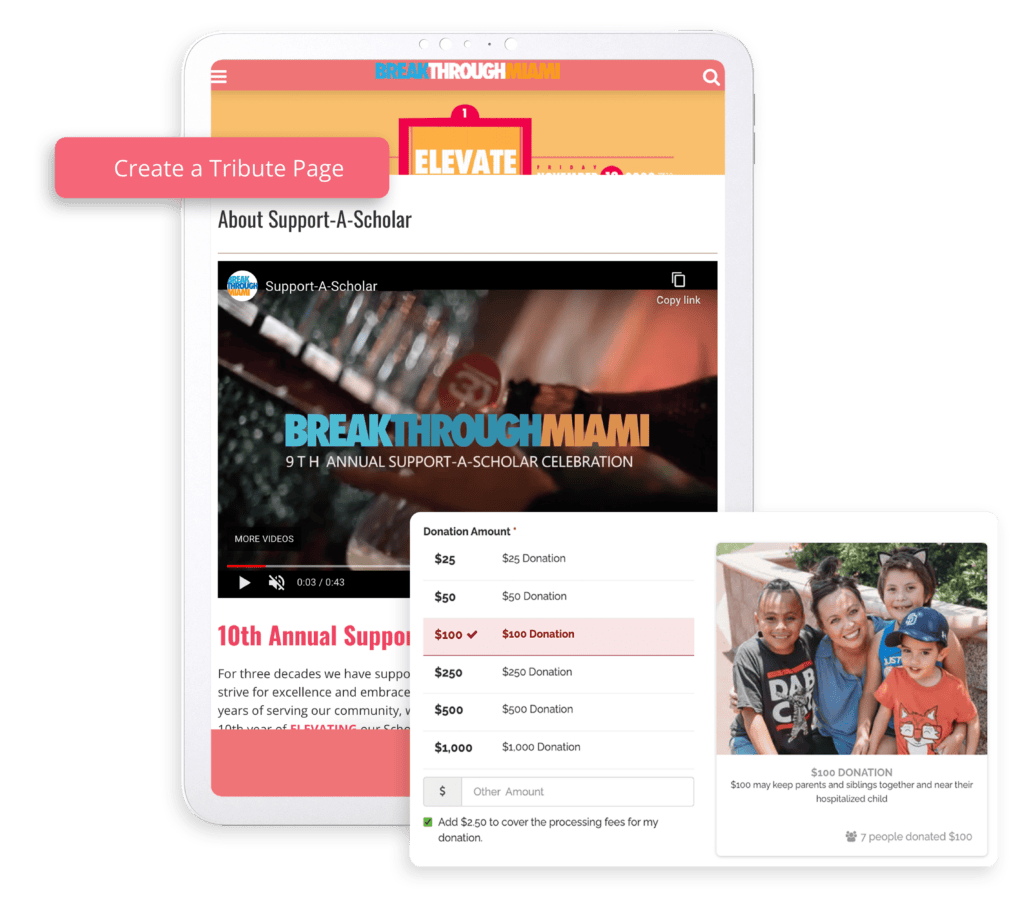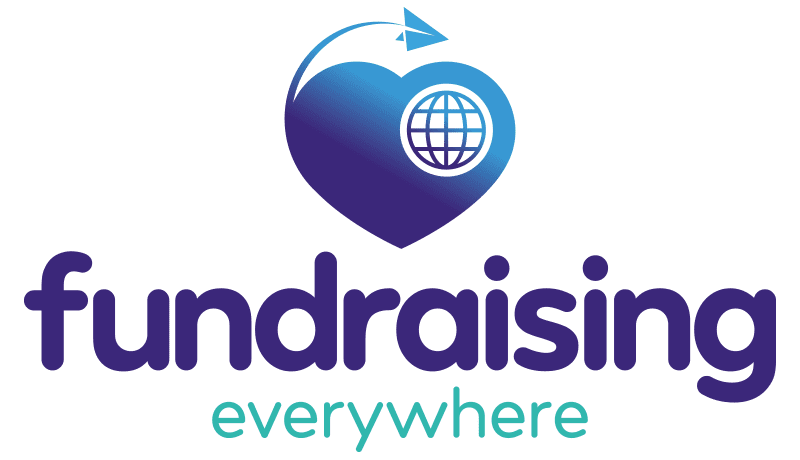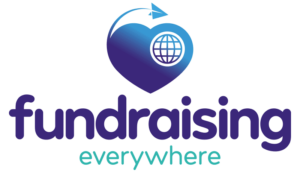
When it comes to fundraising, people trust people. That’s why peer-to-peer (P2P) fundraising is such a powerful strategy—it transforms supporters into advocates, empowering them to raise money for your charity by engaging their own network of family and friends.
P2P fundraisers are extremely effective, but because they’re online, much of your success depends on the quality of participants’ online fundraising pages. These pages must be engaging enough to inspire action while remaining personal and easy to navigate in order to drive donations and grow your impact.
To make your design stand out, let’s explore the most crucial components of a user-friendly P2P fundraising page. With the right peer-to-peer platform, you can easily create pages with all of these features and more.
1. Participant's Personal Story and Photo
Ultimately, personalization is the key to successful peer-to-peer fundraising. These campaigns rely on showcasing individual supporters’ passion for your cause, so each person’s fundraising page should tell their story. The best way to do this is to put the participant’s story front and center.
Leave room for participants to add a custom description and photo at the top of the page to draw visitors’ attention. Ask participants to share their connection to your charity, the reason they’re fundraising, and any other details about their personal motivations. For example, one participant might describe how volunteering with your organization changed their life, while another shares that they’re fundraising to memorialize a loved one.
To help participants write compelling descriptions, provide them with storytelling tips and examples. You might even give them a list of questions to answer (“Why are you raising money for our cause?”) or a basic template to use.
2. Campaign and Mission information
Next, make sure your P2P pages include information about your organization’s cause and the wider campaign. Visitors will want to understand why you’re raising money, the initiatives or projects their donations will support, and how they can get involved.
Write a short, standardized description that includes:
- The name and purpose of your fundraising campaign
- Basic details about your charity’s mission
- Links to your main campaign page and website
- Information about your peer-to-peer fundraising event (if applicable)
- A link to join the campaign and create their own fundraising page
Remember that this description should always be secondary to participants’ stories. Place the text below the participant information or in a different section entirely so visitors see the personalized details first.
3. Built-in Donation Form
Use an online fundraising platform to embed a streamlined donation form into participants’ personal peer-to-peer fundraising pages. This way, visitors can donate immediately without having to navigate away from the page.
To boost giving potential, include options for recurring giving and a few suggested donation amounts on your form. If you can highlight the tangible impacts these donations make on your mission, even better! For example, take a look at the donation form on this Breakthrough Miami P2P fundraising page:

In this example, the organization explains what a $100 donation can do for hospitalized children and pairs it with a photo to give prospective donors a clear idea of their potential impact.
Consider adding matching gift information to your donation form, too. Let supporters know that they may be able to double the size of their gift by requesting a corporate match from their employer. Provide basic details about how to request a match, or embed a matching gift search tool to give more specific instructions.
4. Real-time Fundraising Progress Updates
At a minimum, fundraising pages should display the participant’s personal donation goal and the overall campaign goal. To further engage visitors and encourage larger donations, incorporate progress bars and other gamification tools. These features should update in real time, so visitors can track individual progress and see the total grow as donations come in.
In particular, the OneCause guide to peer-to-peer platforms recommends using gamification strategies like:
- Fundraising thermometers: These are essentially progress bars that use a thermometer visual to show how close a participant is to reaching their goal. With real-time updates, both visitors and participants can see their current progress at a glance.
- Leaderboards: Leaderboards highlight the participants who have raised the most money so far. Whether your campaign has a competition element or not, supporters may give more to push their friend closer to the top.
- Milestone badges: Award participants virtual badges for reaching certain goals and automatically display them on their fundraising pages. They might earn a badge for raising 25% of their goal or earning support from 15 donors, for example.
The best part about these strategies is that they engage both prospective donors and your peer-to-peer fundraising participants. Fundraisers will enjoy striving to earn more badges or get a higher spot on the leaderboard. They may even share these graphics on social media, boosting your campaign’s reach even more.
5. Social Sharing Buttons
Peer-to-peer fundraisers are social campaigns, so supporters will naturally want to share their involvement on social media. Make it easy by incorporating built-in social sharing buttons directly on each fundraising page. Social media posts and stories are the easiest way for supporters to spread the word about your campaign—plus, they’re an important part of an omnichannel marketing strategy.
Consider placing sharing buttons in high-visibility spots, like directly beneath the participant’s story or as a prompt after someone donates. This encourages both donors and visitors to amplify the campaign—even if they’re not able to make a donation themselves.
Other peer-to-peer fundraising resources
Remember that a well-designed fundraising page isn’t the only thing your peer-to-peer participants need to succeed. Along with a customizable page, make sure to provide them with campaign messaging, appeal templates, and social media graphics to share with their networks. The more support you provide before and during the fundraiser, the better results you’ll see.






